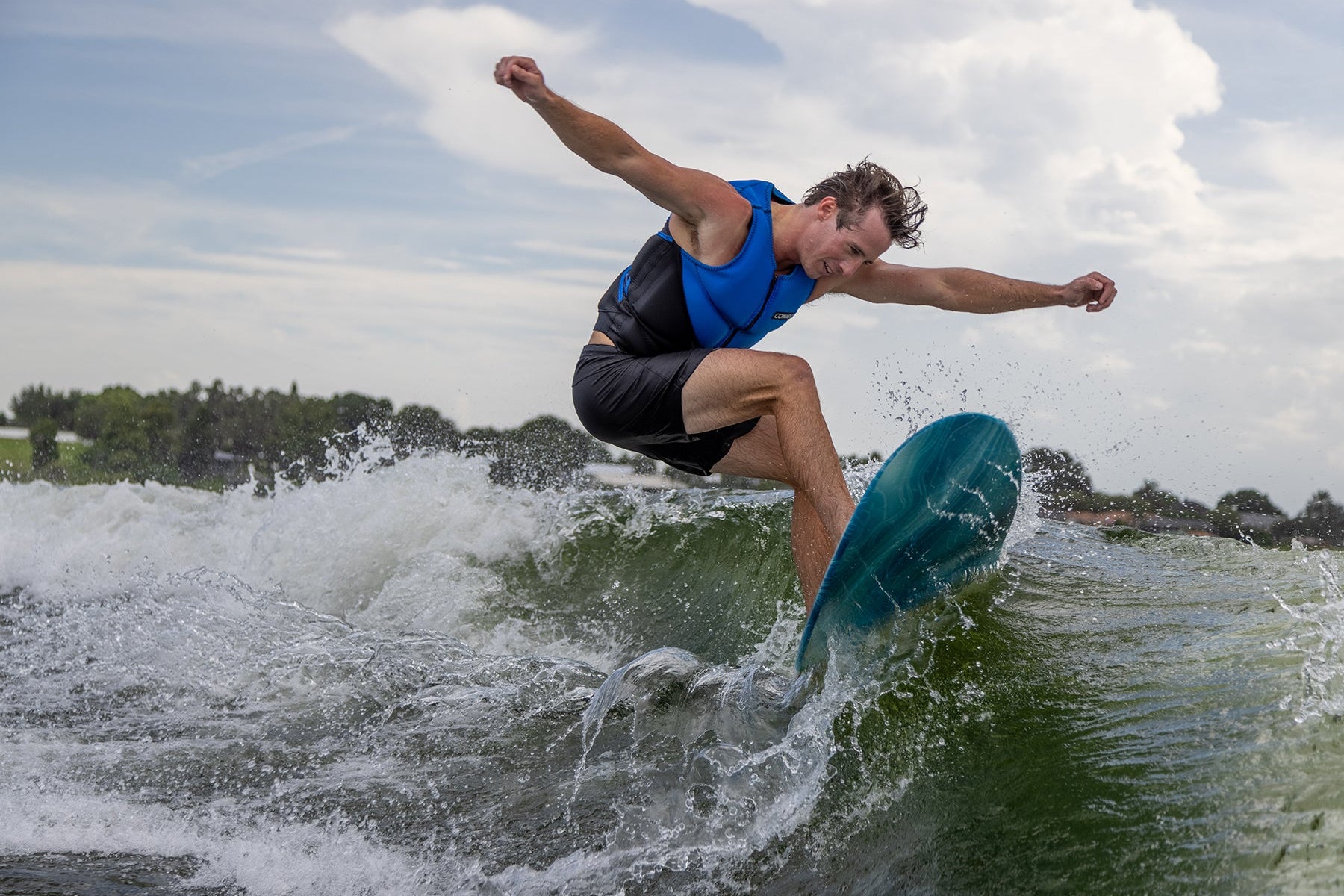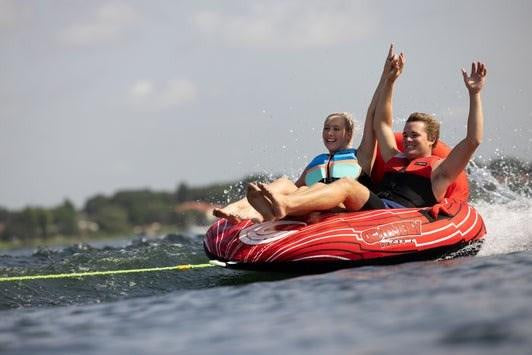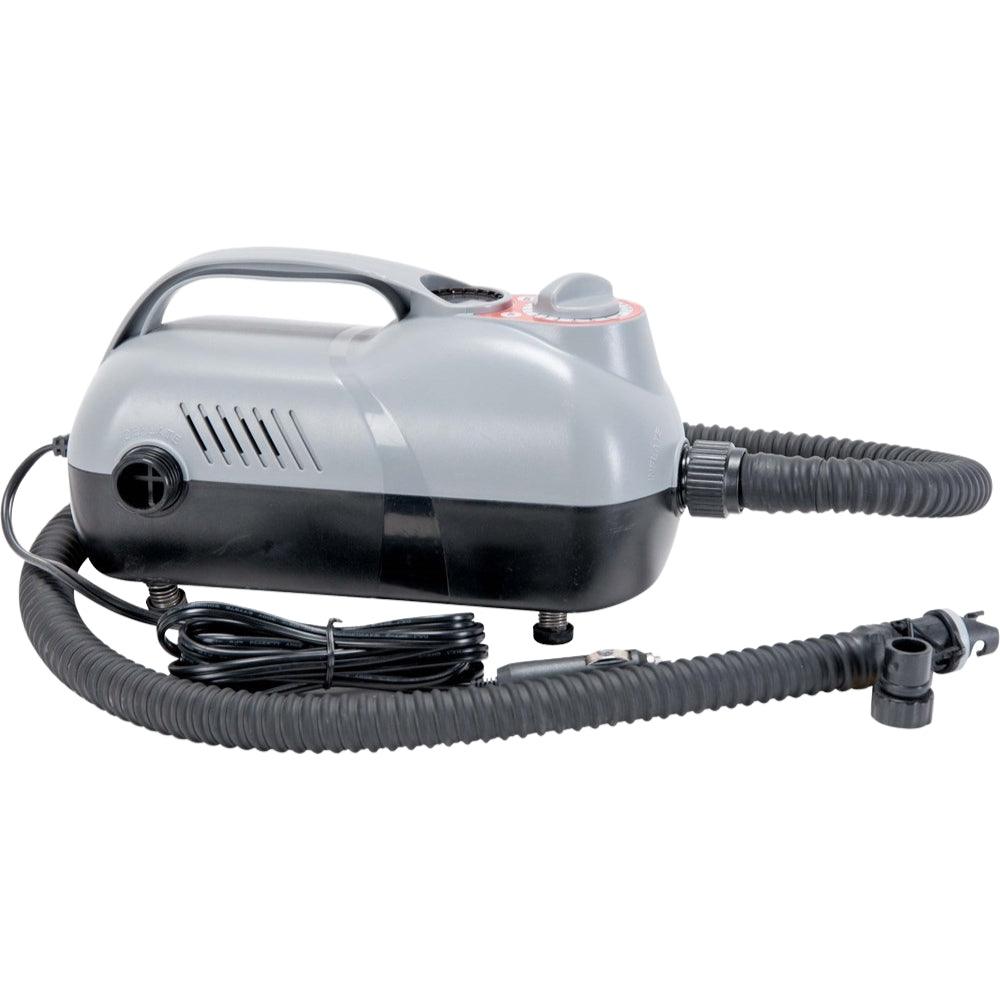Choosing a wakeboard can be a game-changer for your time on the water. The right board will help you learn faster, ride smoother, and pull off better tricks. But with so many shapes, sizes, and features out there, how do you know what’s best for you? Read on for 10 tips that’ll help you get the right board under your feet.
1. Own Your Board
Investing in your own board is a huge step toward leveling up your skills. Sharing can seem budget-friendly, but it often ends with everyone compromising—and nobody really improving. If you must have one board for a mix of skill levels (like a board kept at the batch for guests), go for a solid intermediate option that most riders can manage comfortably.
2. Check the Skill Level
Wakeboards typically fall into three categories: beginner, intermediate, and advanced. Beginner boards are slower and more forgiving, which helps new riders pick up the fundamentals. Advanced boards, on the other hand, feature aggressive designs that are super responsive (but can be intimidating if you’re not ready). Intermediate boards often borrow features from top-tier models but are toned down for all-around usability.
3. Pick the Right Size
The size of your wakeboard should match your height and weight. A board that’s too small sinks more and forces you to ride at faster speeds—making it harder to control. One that’s too large can feel bulky and limit your ability to spin or pop off the wake. Most manufacturers have handy charts to guide you. When in doubt, go slightly larger so you have a stable platform to grow into as your skill set expands.
4. Know What’s Inside
Most wakeboards are made from fiberglass layered around either a foam or wood core. Foam-core boards are lighter, more affordable, and durable, whereas wood-core boards give you more flex for explosive pop off the wake. Some brands are even experimenting with graphite for added stiffness and reduced weight, which can help you maneuver more easily in the air.
5. Consider Your Riding Style
If you come from water skiing, chances are you ride with the same foot forward every time. You might prefer a single-tip board (wider nose and squared tail). Snowboarders or skateboarders, who often switch which foot is forward, may appreciate a twin-tip board (same shape on both ends) for a more symmetrical feel.
6. Understand Rocker Types
A board’s rocker is its profile shape from tip to tail. A continuous rocker has a smooth curve, delivering consistent speed and smoother transitions off the wake. A three-stage rocker has two distinct bends, giving you a bit of a kick or extra lift when you launch. Keep in mind, lower rockers track better going straight, while higher rockers can be more forgiving on landings.
7. Figure Out Your Fin Setup
Fins affect the direction and stability of your board. Deeper fins help beginners keep a steady line, whereas advanced boards often have shallower, removable fins—or just molded-in fins. Some riders prefer going “finless” to really dial in their edging technique. If your board has removable fins, try experimenting with different shapes and sizes to find your sweet spot.
8. Evaluate the Shape
Wider boards tend to launch riders higher off the wake, though they may not carve as easily. Narrower boards carve nicely on the surface of the water but may sacrifice that extra boost on jumps. Edges also matter: beginner boards typically have squarer edges for reliable grip, whereas advanced boards have more rounded edges to lessen the odds of catching an edge during tricks and spins.
9. Don’t Forget the Bindings
Bindings are just as important as the board itself—maybe more so. They connect you to the board and can reduce injury risk by providing a secure fit and proper support. Adjustable bindings are fine for those starting out, but if you’re getting serious about big air or more intense riding, opt for bindings that fit your feet perfectly.
10. Test Before You Invest
When possible, demo different boards before making a final decision. Many shops offer test rides and will often credit any demo fees toward your purchase. It’s worth spending a little extra to get a board you love, from a reliable brand, at a friendly local shop. Should any warranty issues pop up, you’ll be glad you have solid support. Check out your local Connelly Dealer!








